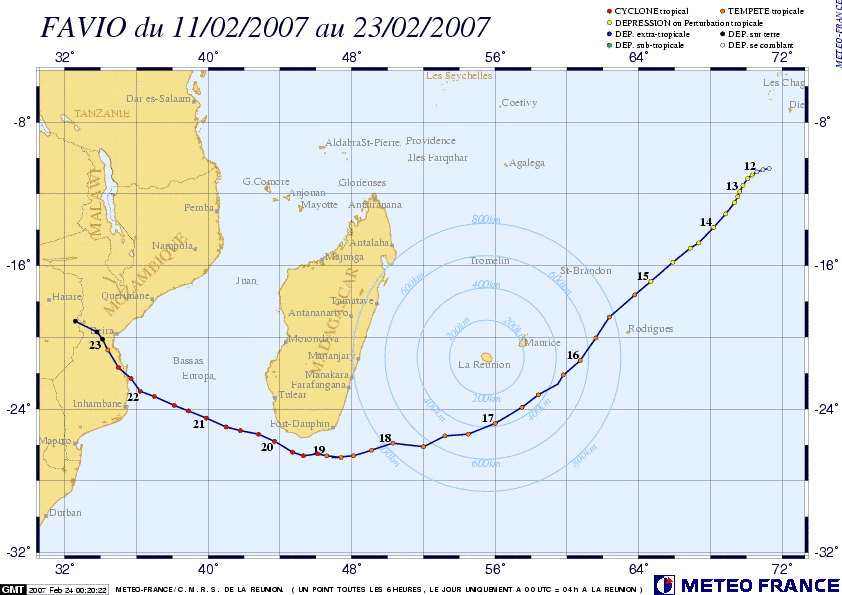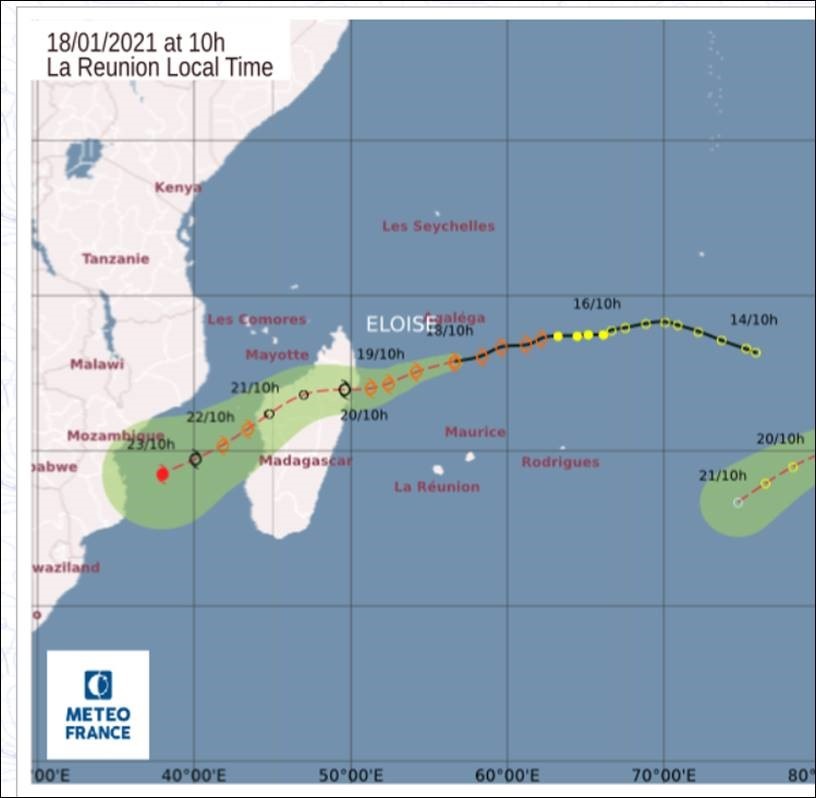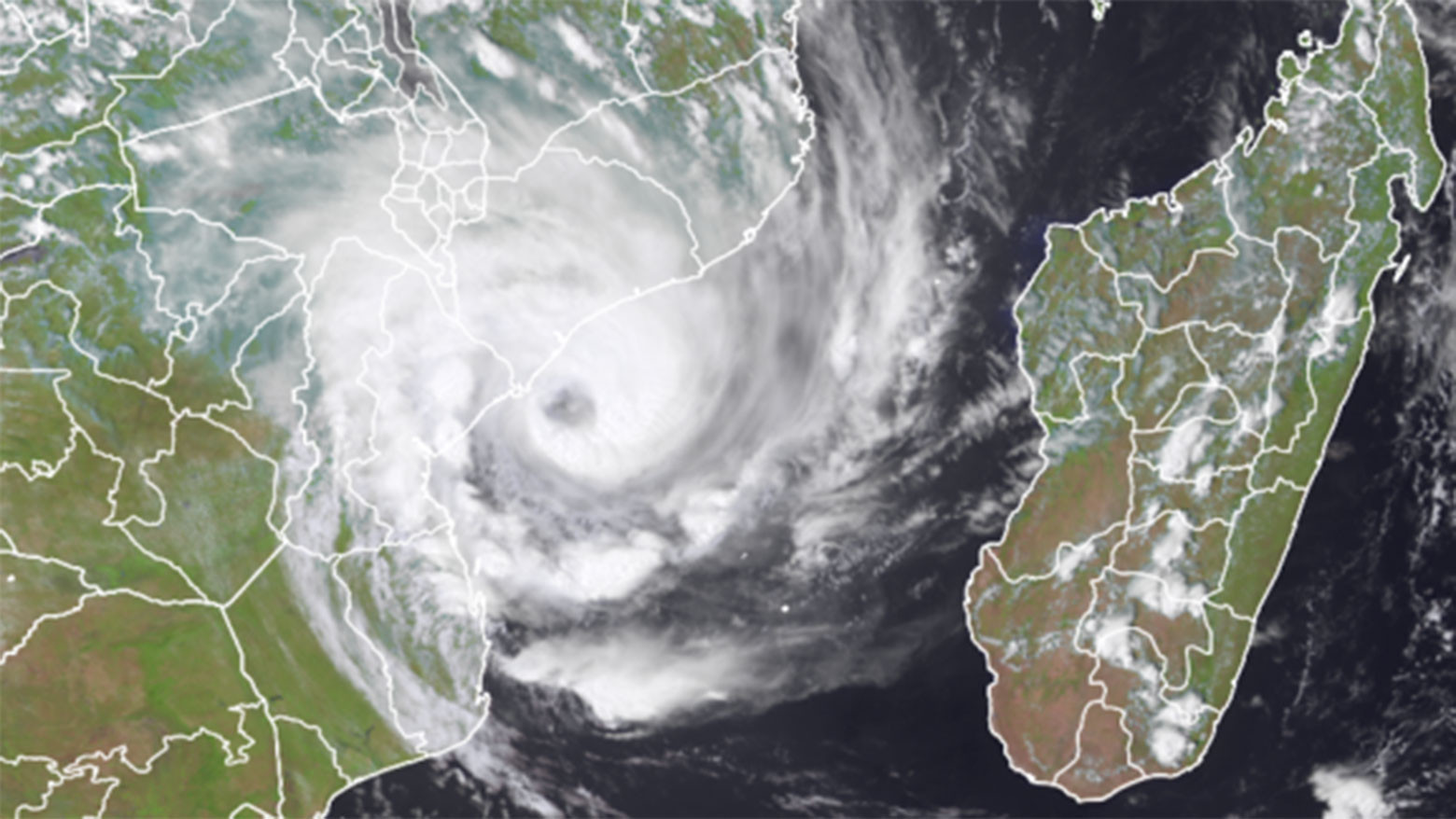Since there were no major storms in my student days, I would stare at old satellite images of ones that had hit South Africa in the past. One such picture was of Tropical Cyclone Domoina, which struck the east coast in January, 1984. Domoina brought devastating rains to South Africa, Swaziland and Mozambique. It took 16 years for anything like that to hit the region again.
But 2000 seemed to mark the start of a new era of weather events for the region. That year, a series of tropical storms hit Madagascar, including Hudah, which crossed the Mozambique Channel to reach South Africa. Seven years later, just before my debut as a weather reporter, we were hit by Favio. It was the first known storm to pass south of Madagascar and make landfall on the continent as an intense tropical storm.

I finally got my chance to report on an intense weather phenomenon on home ground in 2012. The large tropical cyclone Irina brought gusty winds and floods to the usual trinity of Madagascar, Mozambique and South Africa.
Since then, tropical storms that severely impact Southern Africa have been an almost annual event, with 2015 the only exception. To put this in perspective, between 1950 and 2000, there were only four tropical storms powerful enough to earn a name.
In 2017, Cyclone Dineo hit Mozambique and its effects were felt as far away as Zimbabwe and Malawi, causing over $200 million in damage. Just two years after that, cyclones Kenneth and Idai struck in quick succession, killing over 1,000 people in Mozambique. The most recent cyclone, Eloise, hit in January 2021 and erased all the recovery work achieved by the vulnerable communities of Mozambique over the last two years

These storms appear to be increasing both in intensity and frequency, and it’s likely that a recent warming of the planet, including its oceans, is to blame. This is because tropical storms form in warm ocean waters near the equator. The warm waters cause air to rise quickly while creating an area of low pressure. The longer the storm stays over the ocean, the more moisture it draws in, and the stronger it becomes. Huge cumulonimbus clouds form as a result of the rapid rising of warm air and falling of cool air.
Data gathered by the Indian Institute of Tropical Meteorology indicates that the Indian Ocean’s sea surface temperature has increased by about 1ºC per decade since the 1950s. The current average surface temperature is very close to 30ºC. The threshold for creating tropical storms is around 26.5ºC.
This is why the U.S. Global Change Research Program and the Intergovernmental Panel on Climate Change both say tropical cyclones will be more intense in the 21st century, and more of a threat to coastal and island communities.
The impact of tropical cyclones
Because these storms first form at sea, they have the power to disrupt and endanger shipping traffic. But the most severe effects can be seen when they hit densely populated cities. In recent years tropical cyclones have claimed thousands of lives, caused massive damage to property and infrastructure, eroded soil and flooded urban areas.
The 2020 tropical cyclone season was even more punishing, as it coincided with the COVID-19 pandemic and highlighted just how unprepared southern Africa is to deal with extreme weather. Thousands of people were forced to evacuate to shelters, putting them at even greater risk of contracting the virus.
The world seems to have changed greatly since those days of dry sunshine. And though I still feel the excitement that comes with dramatic weather events, these days I’m hoping for calm and safe conditions.

